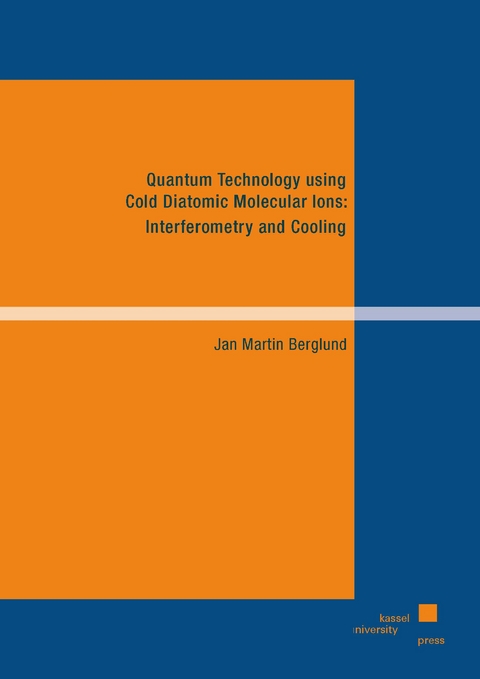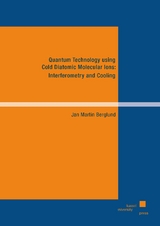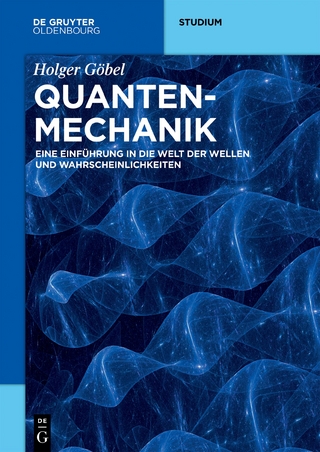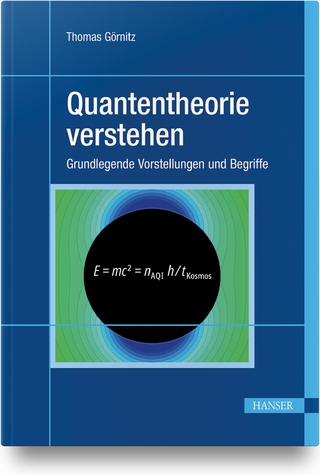Quantum Technology using Cold Diatomic Molecular Ions: Interferometry and Cooling
Seiten
2023
Kassel University Press (Verlag)
978-3-7376-1137-4 (ISBN)
Kassel University Press (Verlag)
978-3-7376-1137-4 (ISBN)
Atoms and atomic ions have proved to be useful as quantum technological systems, where atomic clocks are one of the more famous implementations. Molecules, with more degrees of freedom (vibrations and rotations) are considered as natural extensions to atomic systems. In particular, we study cold molecular diatomic ions as systems for implementation in quantum technology and in particular the rotational degree of freedom of such molecular ions. Quantum effects manifest themselves at very cold temperatures. To reach such low temperatures, Doppler cooling via resonant coupling to external laser fields can be used for atoms and atomic ions. Molecules are in general more difficult to cool down due to their more complex internal structure and generally require other cooling methods. One such strategy uses pre cooled atomic ions as coolants for the molecular ions, mediated via repeated collisions between the two ionic species. This method, known as sympathetic cooling, is independent on the internal structure of the molecular ions. It may however, lead to unwanted excitations of the internal degrees of freedom of the molecular ions, and in particular rotational excitations are to be expected. We investigate the rotational population excitation in a cooling process and its relation to the molecular parameters such as the rotational constant and the relevant molecular coupling constants. Based on the separate energy scales of the associated with the translational and rotational degrees of freedom we propose a model that separates the translational energy transfer and the rotational transfer. Polar molecular ions, which possess a permanent dipole moment interact linearly with the field originating from the coolant ion, and due to the gradual change of the field the interaction tends to lead to high field, but near adiabatic dynamics of the rotational states. Apolar molecular ions, on the other hand, lack a permanent dipole moment, due to symmetry, and interact via higher order moments and they therefore couple weakly to the field and the rotational dynamics can be studied using perturbation theory. In addition, we propose to use sympathetically cooled MgH+-ions, forming a Coulomb crystal in a linear Paul trap, to implement a Ramsey-like interferometric setup which can be utilized for sensitive measurments of molecular parameters, such as the polarizability anisotropy. Two time delayed femtosecond laser pulses are used to excite rotational population of the ion. The delay dependent final rotational population defines the interferogram. The ionic spacing in the crystal is typically of the order of μm and allows for single ion addressability and long storage times (up to hours) in a typical experimental setup. Our simulations indicate that the interferometer can be used to measure the average polarizability of the molecular ion to within errors of the errors of the population measurement.
| Erscheinungsdatum | 27.09.2023 |
|---|---|
| Verlagsort | Kassel |
| Sprache | englisch |
| Maße | 210 x 297 mm |
| Gewicht | 457 g |
| Themenwelt | Naturwissenschaften ► Physik / Astronomie ► Quantenphysik |
| Schlagworte | cold diatomic molecular ions • Interferometry • Quantum Technology • rotational dynamics • sympathetic cooling |
| ISBN-10 | 3-7376-1137-8 / 3737611378 |
| ISBN-13 | 978-3-7376-1137-4 / 9783737611374 |
| Zustand | Neuware |
| Haben Sie eine Frage zum Produkt? |
Mehr entdecken
aus dem Bereich
aus dem Bereich
Eine Einführung in die Welt der Wellen und Wahrscheinlichkeiten
Buch | Softcover (2022)
De Gruyter Oldenbourg (Verlag)
59,95 €
Buch | Softcover (2021)
Lehmanns Media (Verlag)
17,95 €
Grundlegende Vorstellungen und Begriffe
Buch | Softcover (2022)
Hanser, Carl (Verlag)
39,99 €




